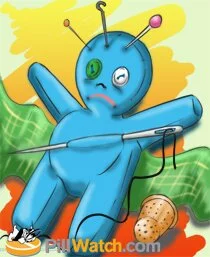
We experience pain at the very first moment of our life. That pain is what brings us to the world. Then we deal with pain here and there when we are hurt, injured or sick. Pain is many-sided and has various ways to reveal itself.
But what is pain? This condition is usually defined as the triggered in the nervous system reaction to the actual or potential tissue damage. Biologically, the experience of pain is referred to as nociception. It occurs in any part of the body, organ or tissue, where pain signals arise secondary to the disease or trauma.
Pain differs greatly in its variations; it is basically classified into acute and chronic. Acute pain occurs as the result of the disease, inflammation or tissues injury and is often accompanied by emotional distress. This type of pain is sudden, can easily be diagnosed and treated. Although, there are cases with complication, and acute pain becomes chronic. This type of pain is considered to be disease itself. It is considered to be chronic if lasts more than 6 months and is resistant to most medical treatments.
Since there is no treatment for chronic pain, the only method to handle it is pain management. Most common chronic pain conditions are those related to headache, low back pain, cancer and arthritis pain, neurogenic and psychogenic pain. Usually ongoing cause of pain is sprained back, serious injury or infection, cancer or other diseases. But it happens so, that people experience chronic pain without any injury or damage.
The back pain, especially pain in the lower back, is one of the most common types and sources of chronic pain. This condition usually results from nerve stress on the muscles or ligaments, scoliosis, ageing, infection or tumour, or more serious injuries and conditions, such as nerve damage or kidney disease. Despite the fact that causes of back pain are generally physical, emotional stress can greatly affect its severity and length. Back muscles become tense and painful if the stress is not controlled.

Luckily, chronic pain can be managed in a number of ways. Medications used with therapeutic effects include opioids (providing analgesic actions), non-steroidal anti-inflammatory drugs (NSAIDs, providing anti-inflammatory actions), antidepressants and antiepileptic drugs (acting directly within the central nervous system). Acupuncture, local electrical stimulation and surgery are the options of the so-called interventional therapy. Relaxation and meditations techniques, biofeedback and behavior modifications are aimed to affect psychological side of chronic pain.
Remember, that every single case of pain should be carefully studied and diagnosed before any treatment is prescribed.
Your Feedback
Write us your experience or opinion that we may publish on this site:
Your message: [ HTML is not accepted ]
| Tip for you : Sign-in with Your OpenID and post faster, easier and with easy access to all your past posts. | |
|
Your Nick: |
External Resources
www.fda.gov/fdac/features/2004/204_pain.html www.ninds.nih.gov/disorders/chronic_pain/chronic_pain.htm www.medicinenet.com/chronic_pain/article.htm familydoctor.org/online/famdocen/home/common/pain/treatment/122.h...
Read more in Arthritis Relief References















